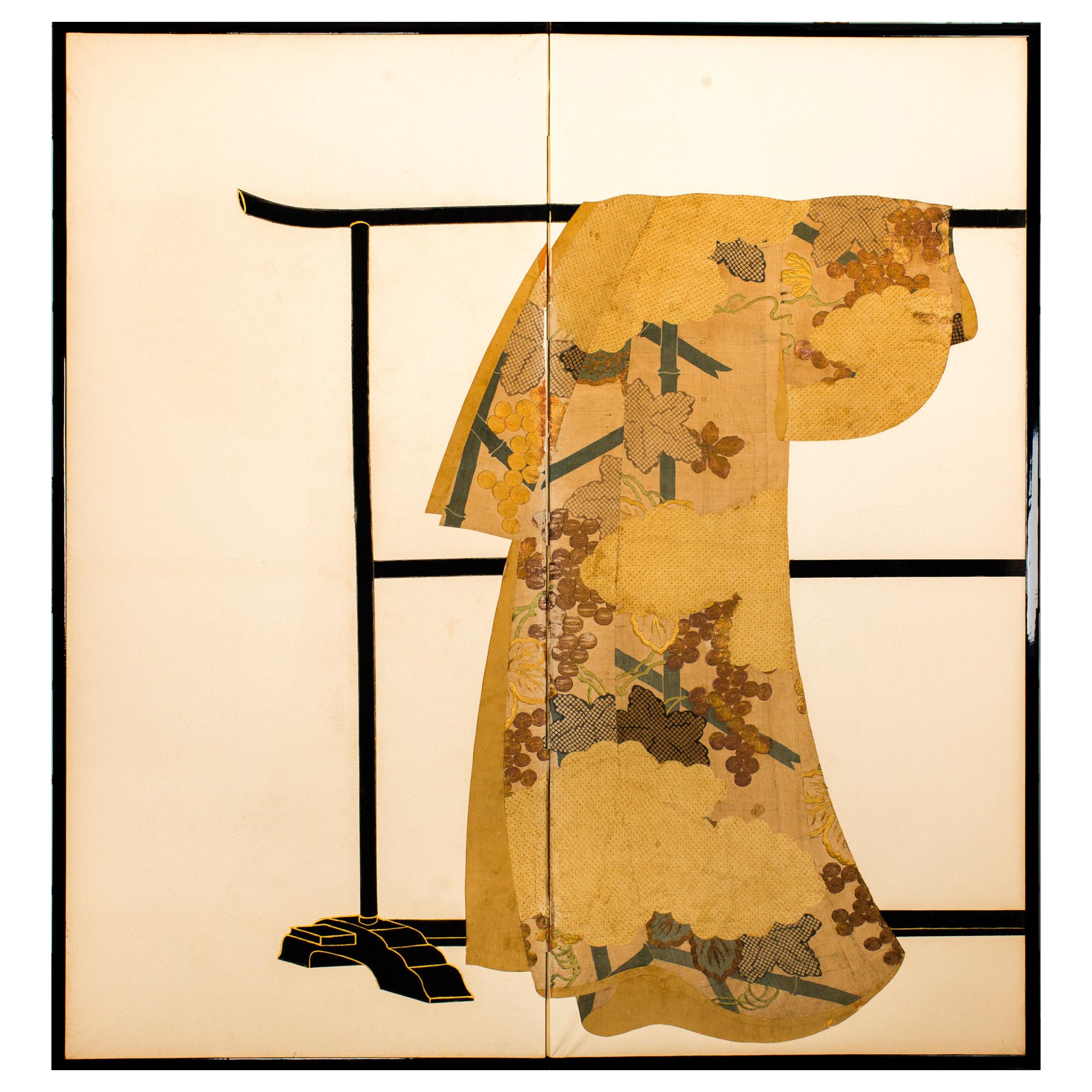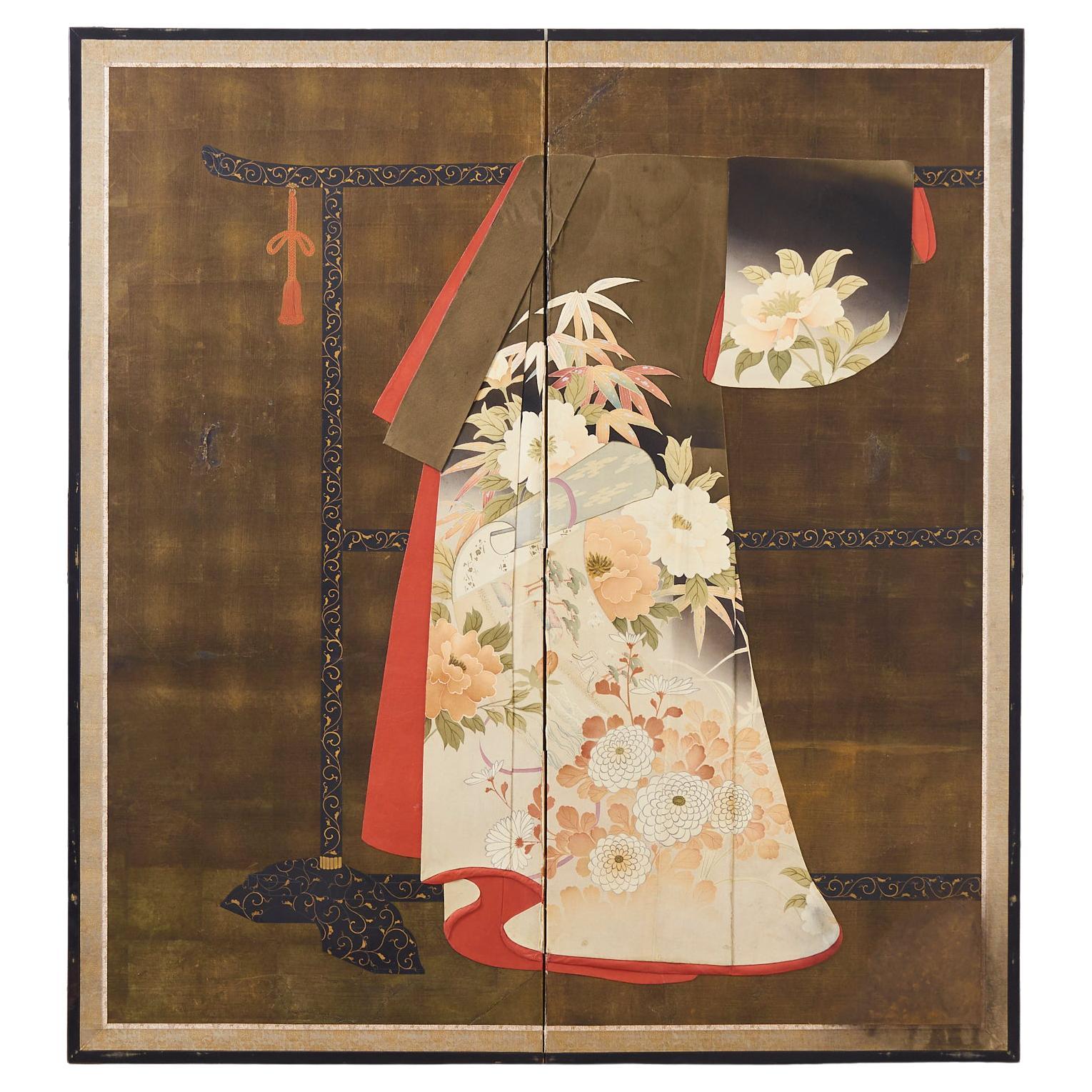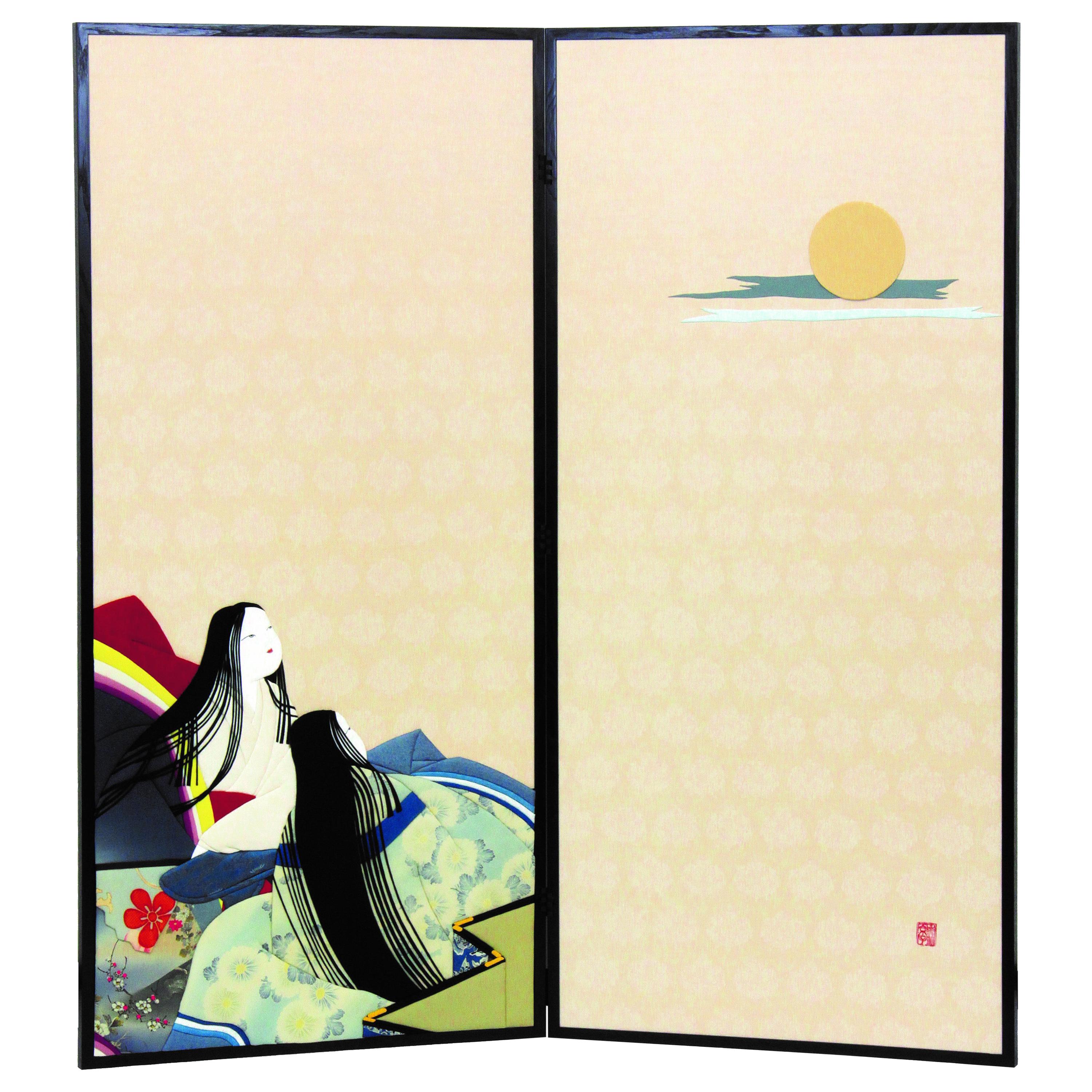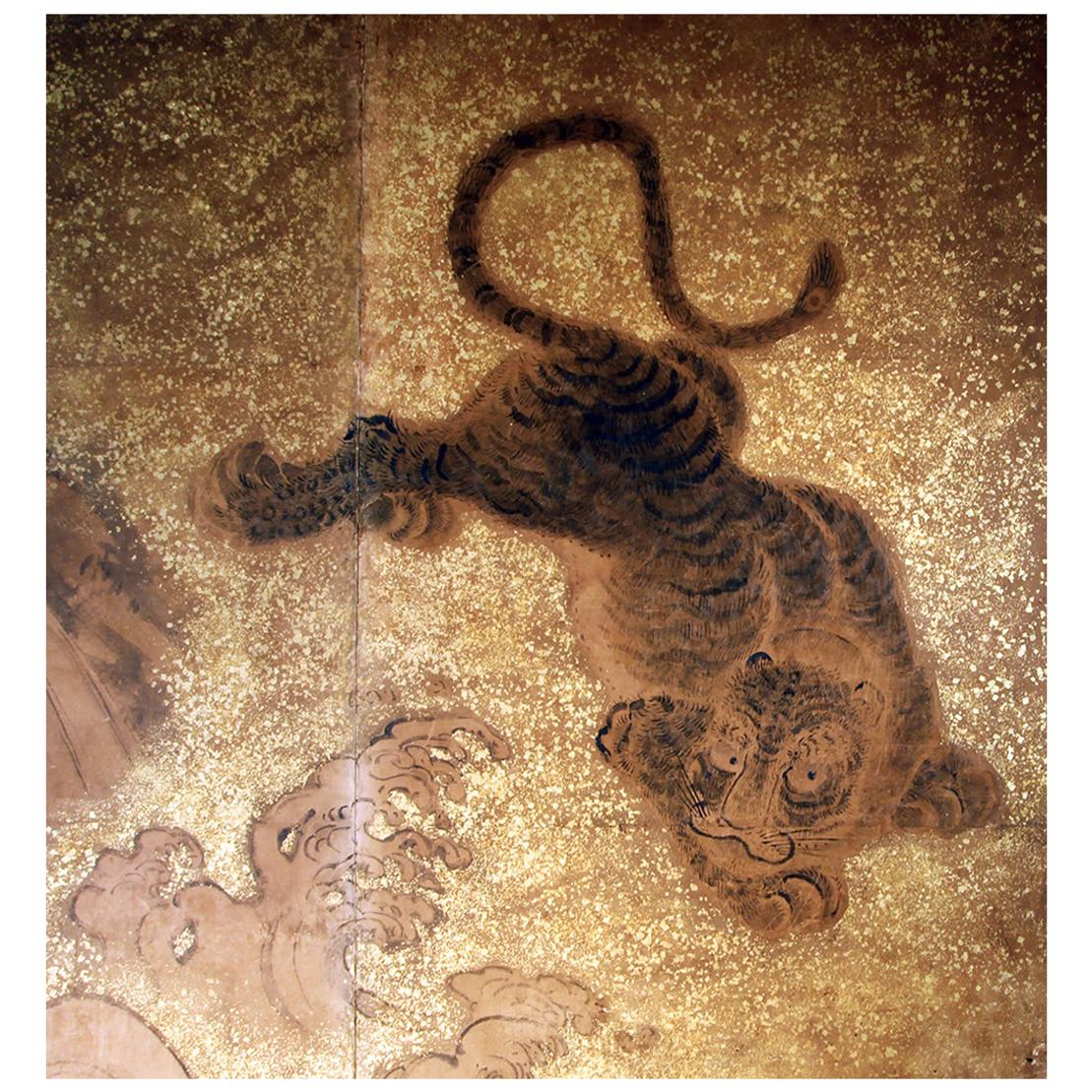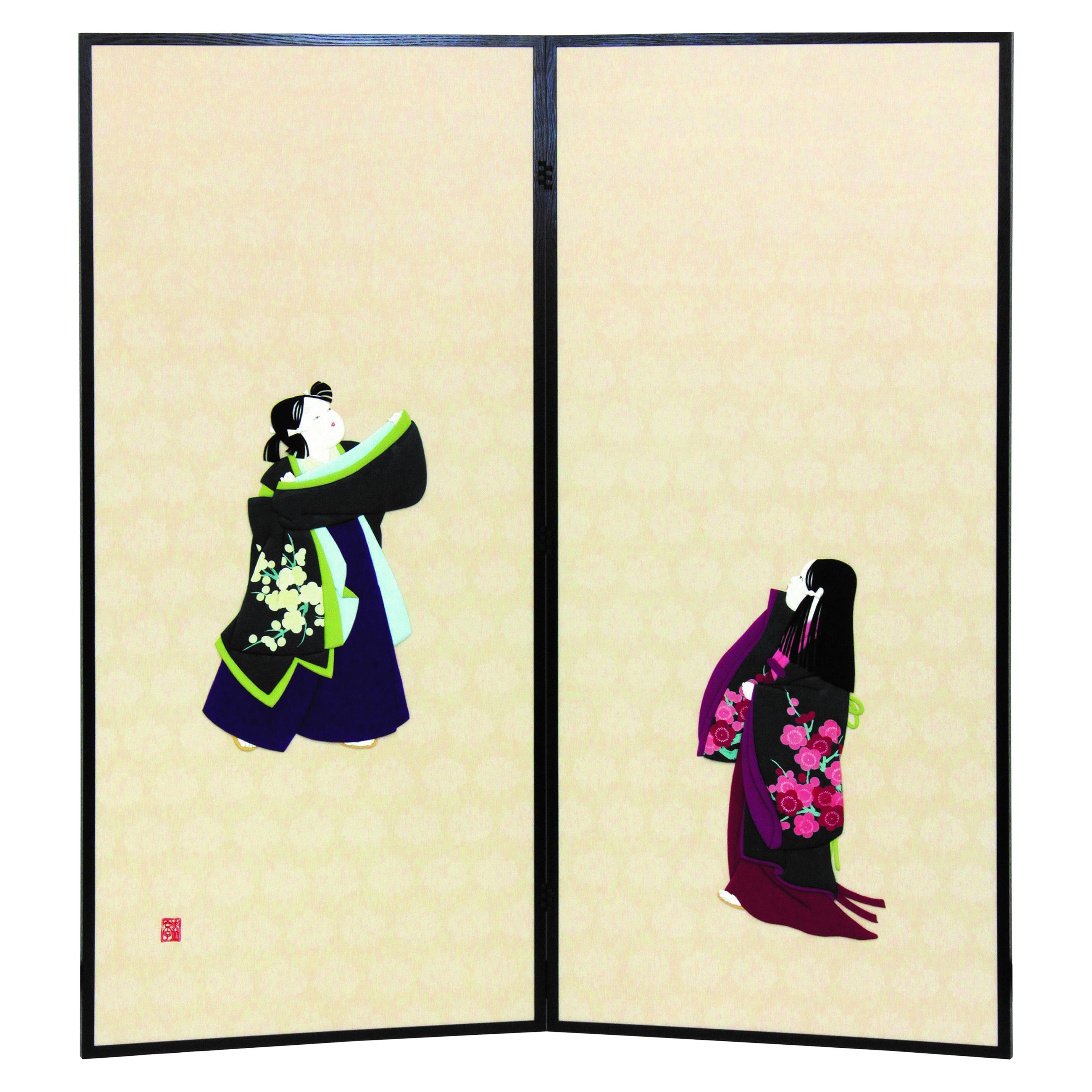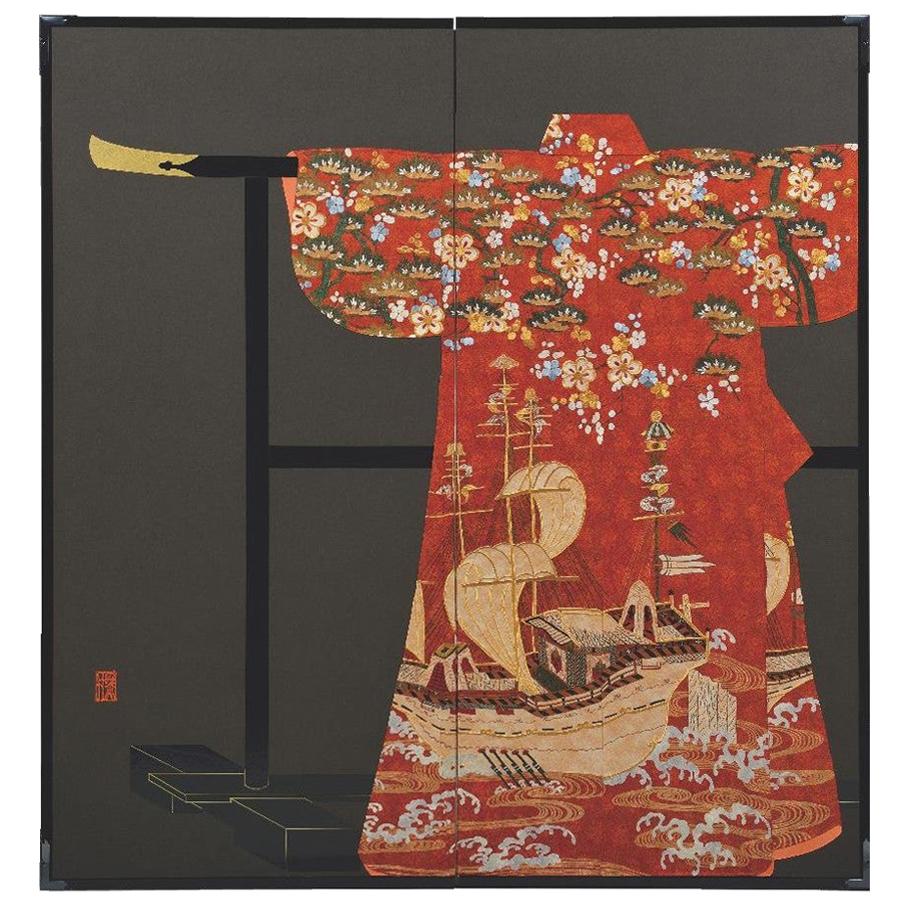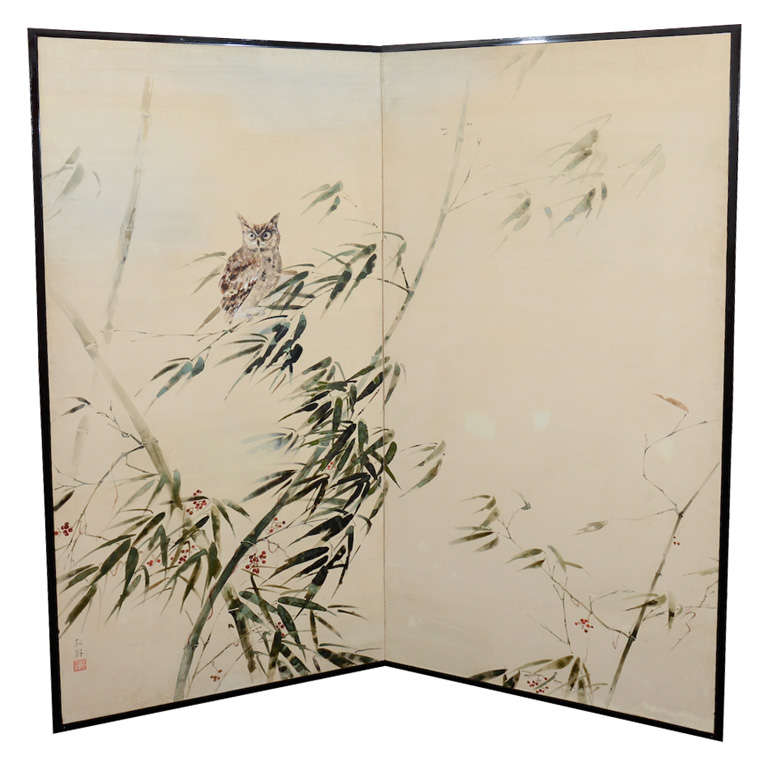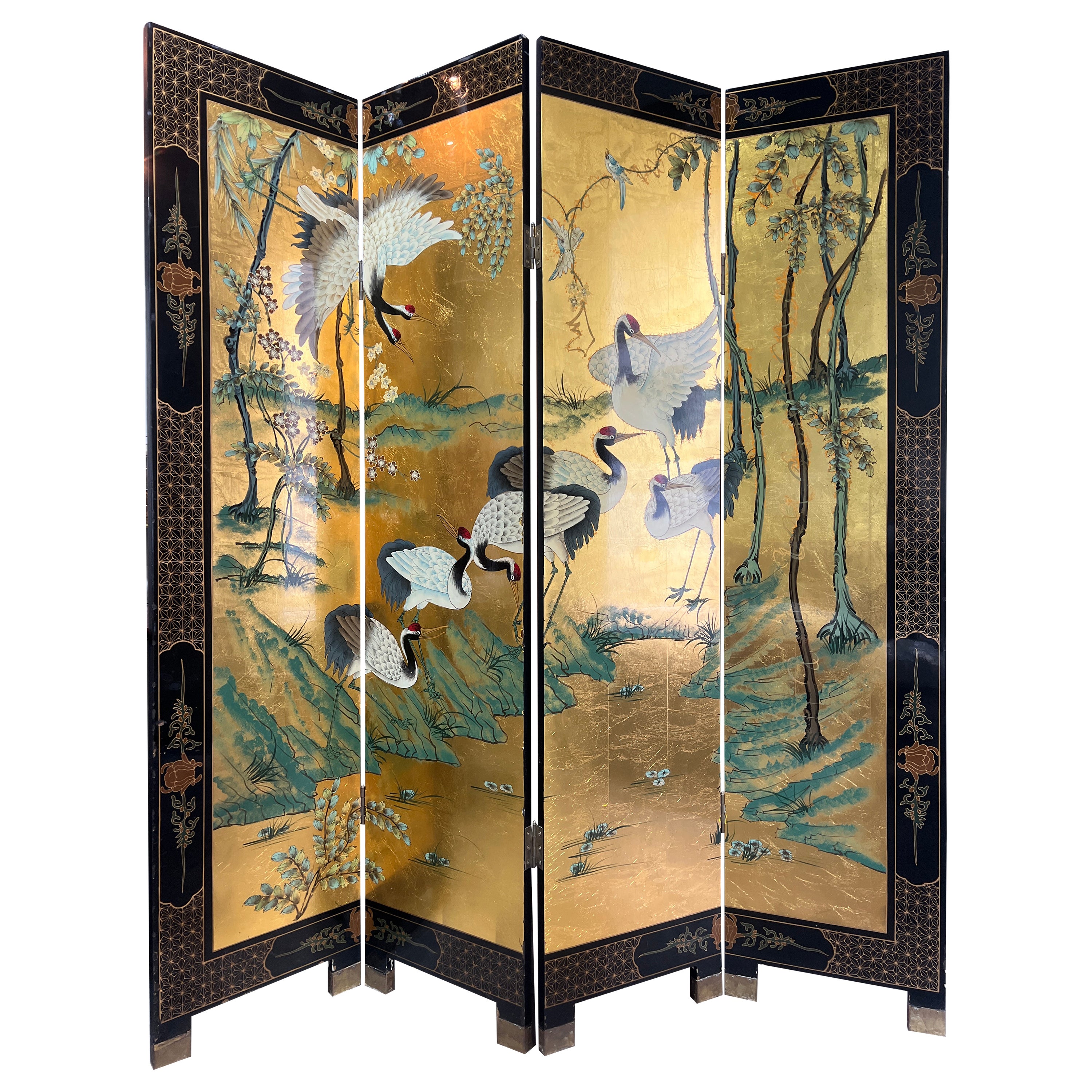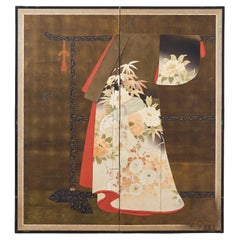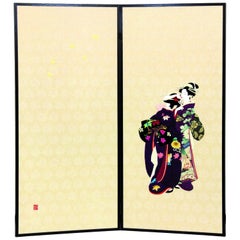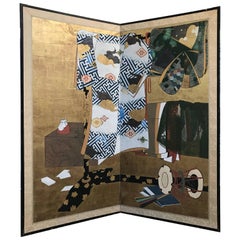
Japanese Two Fold Tagasode Screen
View Similar Items
1 of 10
Japanese Two Fold Tagasode Screen
About the Item
- Dimensions:Height: 68.5 in (173.99 cm)Width: 67 in (170.18 cm)Depth: 0.75 in (1.91 cm)
- Materials and Techniques:
- Place of Origin:
- Period:
- Date of Manufacture:circa 1880
- Condition:Wear consistent with age and use. The backing paper on the reverse side of the screen is torn but does not compromise the appearance of the front of the screen.
- Seller Location:New York, NY
- Reference Number:Seller: S-24381stDibs: LU84959383573
You May Also Like
- Japanese Two-Panel Screen Tagasode 'Whose Sleeves?'Located in Hudson, NYSilk kimono mounted on paper. Kimono is 19th century, with the unusual theme of a grape arbor in embroidery. Kimono is draped over a painted lacquer kimono...Category
Antique Late 19th Century Japanese Paintings and Screens
MaterialsSilk, Wood, Paper
- Japanese Showa Two Panel Screen Tagasode, 'Whose Sleeves?'Located in Rio Vista, CABrilliant Japanese Showa period two-panel screen depicting a women's kimono draped over a parcel-gilt lacquered garment rack. Japanese Tagasode or "whose sleeves" is a provocative poetry theme inviting viewers to speculate as to the robes...Category
20th Century Japanese Showa Paintings and Screens
MaterialsBrass
- Japanese Traditional Brocade Silk Two-Panel Folding ScreenLocated in Takarazuka, JPJapanese contemporary two-panel "byobu" or folding screen featuring two graceful ladies dressed in elegant formal traditional Japanese kimonos. This folding screen is inspired by Jap...Category
21st Century and Contemporary Japanese Paintings and Screens
MaterialsBrocade, Silk
- Japanese Silk Brocade Traditional Two-Panel Folding ScreenLocated in Takarazuka, JPExtraordinary Japanese contemporary two-panel "byobu" or folding screen featuring a lady from the Heian period court, showcased in "The Tale of Genji" by Murasaki Shikibu, widely int...Category
21st Century and Contemporary Japanese Paintings and Screens
MaterialsSilk
- 19th Century Japanese Folding Screen Two Panels TigerLocated in Brescia, ITAuthor Yuushi Mihashi Osamu: Tiger Tora two-panel screen, painted with inks and gold leaf. Edo Period.Category
Antique Early 19th Century Japanese Edo Paintings and Screens
MaterialsGold Leaf
- Edo Landscape Japanese Folding ScreenBy Japanese StudioLocated in Brescia, ITRefined work by a painter from the first half of the 19th century, from the landscape of the "Rinpa" school by a painter from the end of the 18th century, the Rinpa school. Six panels painted in ink on gold leaf and "gofun" on vegetable paper. The flowers are made with the "gofun" technique, natural or pigmented white oyster powder. Rinpa is one of the major historical schools of Japanese painting. The style was consolidated by the brothers Ogata Korin (1658–1716) and Ogata Kenzan (1663–1743). This folding screen has a very clean design that leaves plenty of room for the beautiful golden landscape. It comes flat and you can easily hang it with our hooks. Lucio Morini...Category
Antique 18th Century Japanese Edo Paintings and Screens
MaterialsGold Leaf
